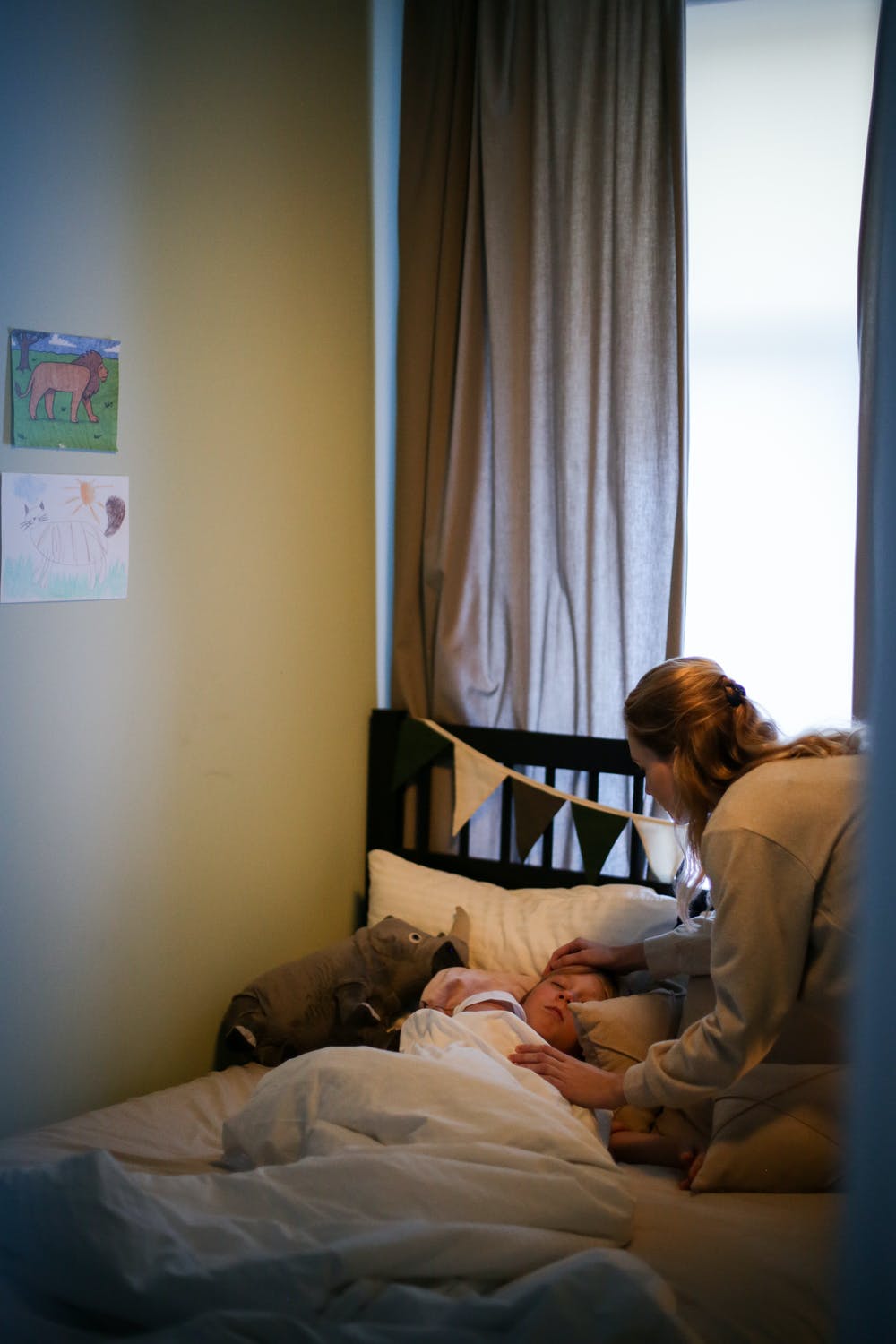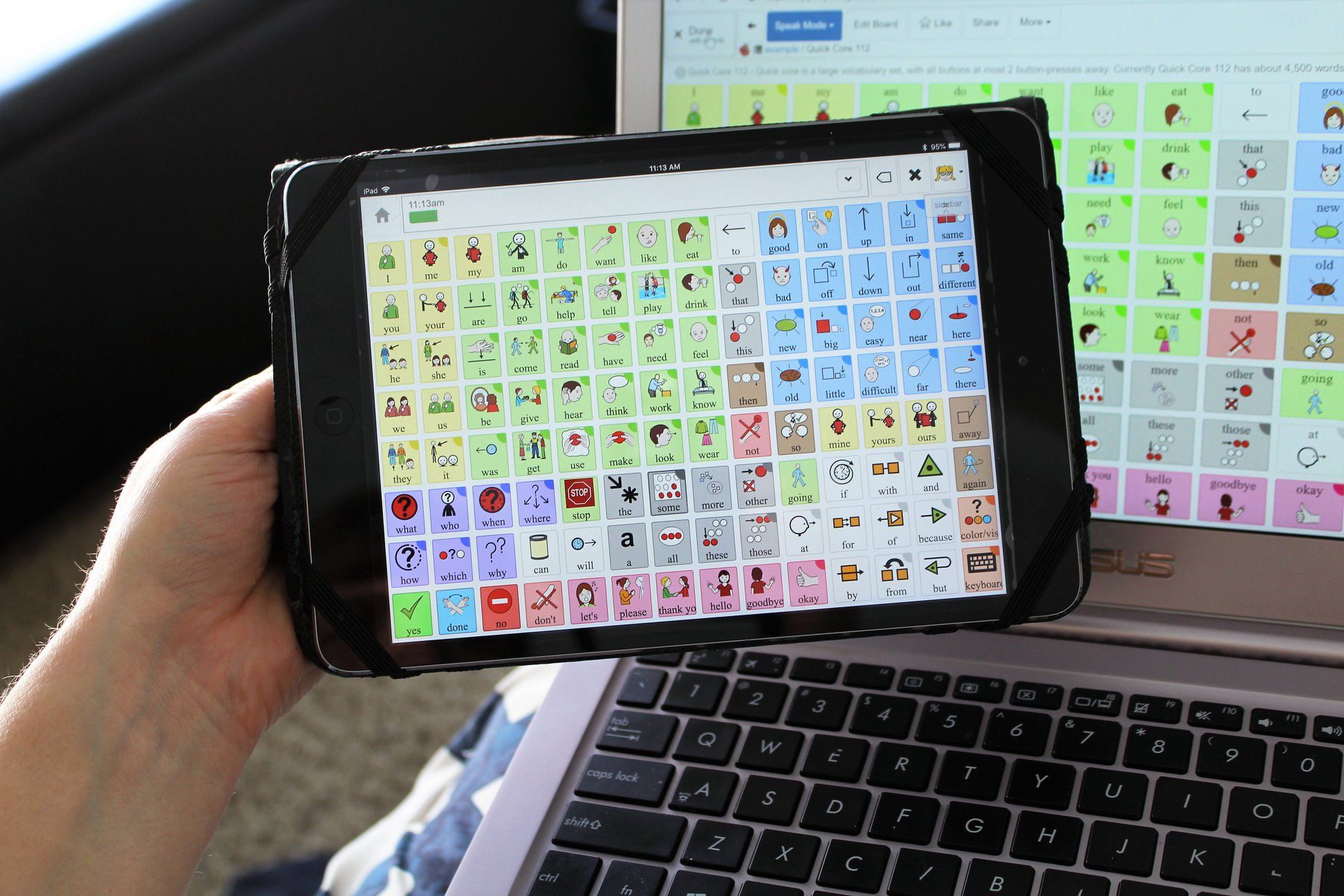Open Communication Corridors by Creating the Right Space for Your Bright, Beautiful Autistic Child
We all know that communication is an essential part of life – and we want to make communication options available to EVERY person (which explains our love of augmentative communication).
But solid communication may be impeded if a person feels anxious, uncomfortable, scared, or frustrated.
Building an environment in which a person can focus on their thoughts and feelings rather than being distracted by outside factors sometimes makes it possible to overcome communication hurdles.
Suzanne Tanner shares some of her thoughts and suggestions on ways to create an inviting space for a person with sensory concerns which can often accompany autism and other diagnoses.

For children with autism, having a calm, stress-free, structured home environment helps them feel safe and allows them to thrive and feel happy. While having those qualities in a home seems to be relevant and important for everyone, they are especially so for children on the autism spectrum.
For example, your child may need a quiet space where they can retreat from sensory overload or a designated area where they can engage in solitary play.
Understanding your child’s needs, anticipating problems before they arise, and using all the tools available to you can make for a much better life experience for your child and for you.
A Place of Their Own
Children on the autism spectrum often require a quiet space to retreat to when they need it, so it’s important to make it as comfortable and soothing as you can while still being interesting and enjoyable.
Lighting
Their room should be equipped with lights that can be dimmed and allow them
access to an on/off switch they can operate on their own when they want no light at all for their sensitive eyes. LED light strips, fiber optics, and bubble tube lamps are all good options for children with light sensitivity.
Bedding
Let them go with you to pick out bed linens, or bring home a variety and let them choose. Most children who are ultra-sensitive prefer soft and snuggly fabrics like flannel or t-shirt. Weighted blankets help by regulating the child’s nervous system and encouraging calm. And they help with the sleep and anxiety issues that are common in people with an autism spectrum disorder.
Sensory Deprivation Area
This can even be a tent set up in their room or any part of the house where they want to be near you, but still have the advantages of calming their sensory overload. It could include soft pillows, noise-canceling headphones, fidget tools, and a weighted lap pad.
Control Sound
Sensory hypersensitivity also includes sound. White noise machines or calming music can help mitigate the effects of outdoor sounds. And ensure that the noise in the rest of your home is kept to its lowest levels at bedtimes.
Air Quality
Improve the indoor air quality of your home by using high-efficiency air filters and purifiers. These filters will stop harmful airborne particles, including allergens, from circulating throughout the house.
Communication Concerns
Some autistic children have difficulties developing language, find it difficult to
understand or use spoken language, or have no verbal language at all.
Watch your child carefully and notice the ways your child attempts to communicate. For example, crying when they’re in the kitchen could mean they’re hungry. When you’re working on your child’s communication skills, consider labeling items in the house like “toys” or “lamp.”
Some people on the autism spectrum find maintaining eye contact uncomfortable and appear disinterested, it’s important not to insist they look you in the eye when communicating. This can be overwhelming or even painful for these individuals.
AAC programs like CoughDrop help bring out the voices of those with complex communication needs through powerful technology that adapts to the individual and supports everyone around them in trying to help them succeed.

Family Support
Look for ways to prioritize all of your children. Having a set routine and time of day scheduled will ensure all your children have quality time with you. This can include being available for bedtime every night, having your children help with simple chores, and planning some new experiences together, so you have something to look forward to.
Creating a stress-free environment for the entire family is important too. Reducing clutter is one way to reduce stress. Scientists at Princeton found that clutter reduces your ability to focus as well as your ability to process information.
Don’t forget that eating well and staying active are two major components of creating a healthy life, so make sure your fridge and pantry are stocked with healthy choices for everyone and make time every day for everyone to get some exercise.

Autistic kids are wonderful, they can often find solutions to problems that people who don't have autism struggle to solve. They can also be very creative and imaginative in their thinking and can be an overall joy to be around. Sometimes Autism is just another way of saying Super Power!
About the Author: I’m Suzanne Tanner, and I’m following in my mother’s footsteps to become a physical therapist. Growing up, I watched my mom work with patients of all backgrounds: individuals who were born with physical limitations and wanted to become stronger; people who suffered a trauma and were working to rebuild strength they’d lost.
